Cladding is a construction used since ancient times involving one material applied to cover the external structure of the building.
The purpose of cladding is to protect a building’s structure from natural elements like wind and rain. Still, it can have other benefits, such as insulation and noise control, and it can boost the aesthetic appeal of a building.
They come in various colours and can be wrapped around the whole building or used only in specific areas. Many materials are used for cladding, including:
Brick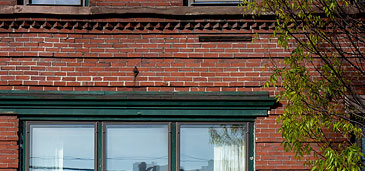
Glass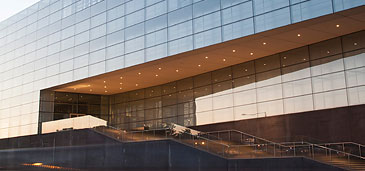
Timber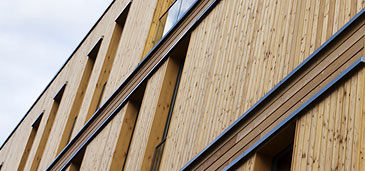
Vinyl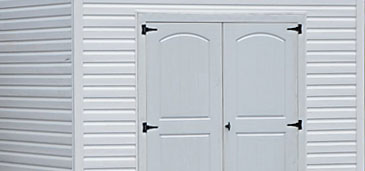
Steel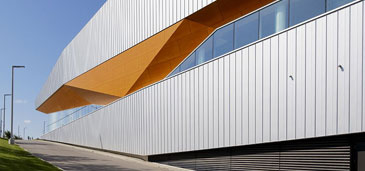
Aluminium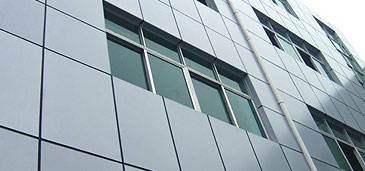
However, cladding has gained modern notoriety due to cases of building fires resulting in death from unsafe cladding, such as the 2017 Grenfell Tower fire in London, the Lacrosse building in 2014, and NEO200 on Spencer Street in early 2019. This has led state governments to ban combustible cladding and called for its immediate replacement. Many states are in the process of risk assessment for buildings that are already affected, with rectification work in the pipeline. While many buildings have safe cladding materials, audits have indicated that high-risk cladding is still present in many existing properties.
Certain types of cladding can burn rapidly if they catch fire. Materials such as aluminium composite panels (ACPs) and metal composite panels (MCPs) that contain a polyethylene core greater than 30% possess a high burn rate, are identified to be highly flammable. Owners corporations, and body corporates should be familiar with whether the cladding materials used to construct their strata property or scheme comply with state and territory legislation.
Navigating cladding compliance varies significantly between new and existing structures. Many of the existing buildings in Australia have some form of composite cladding, which may not be hazardous but would be examined anyway to assess the level of risk. While it may be easier for new buildings to comply with these regulations from the outset, removing cladding from existing buildings could be more challenging.
Many older strata plans and community title schemes often face challenges concerning fire safety due to outdated equipment, irregular maintenance, and a lack of strict adherence. These factors may contribute to an increased risk of non-compliance and fire-related incidents.
In recent years, federal and state governments have introduced a range of policies to help improve compliance with building cladding on strata properties. Overseen by the Australian Building Codes Board, the National Construction Code outlines minimum national standards that govern the safety and health, amenity, accessibility and sustainability of new buildings’ design, construction, performance and safety. Learning from past incidents, Australian state governments have banned combustible cladding such as aluminum composite panels and other metal panels with polymer cores and have called for their immediate replacement with safer alternatives.
State-based laws also apply to building cladding on strata, owners corporation, or body corporate properties, with risk assessments for affected buildings and rectification works already underway. Below, we explore the regulations and compliance requirements regarding cladding in owners corporation or body corporate buildings.
The New South Wales Government has taken a whole-of-government approach to mitigate fire safety risks associated with external combustible cladding on strata properties and other buildings. The Environmental Planning and Assessment Amendment (Identification of Buildings with Combustible Cladding) Regulation 2018 guides the industry in adopting safe construction practices. New South Wales requires mandatory registration (via the NSW Department of Planning, Industry and Environment) for all commercial, residential and mixed-use buildings that are two storeys and above. For new buildings, owners must be registered within four months of the property being occupied. The New South Wales Government has established a Cladding Taskforce to address fire safety risks relating to combustible cladding and oversee the government’s action plan to remove and rectify flammable cladding on strata properties as well as commercial and mixed-use buildings.
In response to heightened community concerns over the risks posed to building occupants and responding emergency personnel, the Queensland Government introduced legislative changes whereby owners must follow a compulsory checklist for cladding material. They are also required to undertake a two-stage assessment of their buildings under the Building and Other Legislation (Cladding) Amendment Regulation 2018. The Queensland Building and Construction Commission is an excellent resource to help with cladding compliance.
The Victorian Government has sought to rectify the dangerous combustible cladding installed in many multi-storey residential and commercial buildings in Victoria. The state government passed the Cladding Safety Victoria Act (2020) in December 2020. Under this legislation, independent project managers support owners corporations to replace non-compliant cladding products from their owners corporation property. Provisions are also made for owners corporations to receive state government funding for these works.
In the Northern Territory, building work is required for non-compliant or non-conforming building materials according to the National Construction Code. Body corporates can carry out basic checks to identify and address any materials that may pose a significant risk to the property.
The Government of Tasmania has established minimum requirements for design documents for new residential buildings. They also plan to apply these requirements to all kinds of buildings. It is recommended that body corporates inspect the property for building materials that do not adhere to basic safety standards and source reputable contractors for building works.
Rectifying cladding issues can often entail substantial work and financial commitment from property owners, occasionally leading to extreme measures like demolishing the building. Owners and committees should understand the available options for your state and council. Some government support programs to help with identifying and rectifying cladding issues can be found below:
In New South Wales, the government has launched Project Remediate, a voluntary program designed to replace flammable cladding on eligible Class 2 residential buildings (multi-storey, multi-unit apartment, and mixed-use properties) in 2020. The program provides financial aid through a ten-year interest-free loan and expert assistance to building owners, ensuring that the replacement cladding is certified, safe, durable, and insurable. In addition, New South Wales mandates the registration of buildings with combustible cladding through Taskforce to reinforce the safety of buildings and provide long-term peace of mind to building owners.
The Safer Buildings initiative in Queensland is a proactive program to identify buildings that may have combustible cladding. As part of this program, building owners may be required to register their property and diligently complete a combustible cladding checklist. This process is a necessary step towards helping improve the safety of all Queensland buildings.
Cladding Safety Victoria (CSV) offers funding to rectify combustible cladding on high-risk private residential apartment buildings. High-risk is defined as buildings with three or more storeys that use specific flammable materials in their cladding. CSV might also fund replacing other flammable products if it contributes to a safer and cost-effective solution. However, the program does not cover commercial buildings, serviced apartments, townhouses, and buildings used for student accommodation, aged care, or community housing. The funding is provided to owners corporations to implement cladding solutions that comply with Victorian building regulations.
The Northern Territory (NT) government is actively reaching out to developers whose buildings may be at risk, encouraging them to act. In a collective effort with the Commonwealth, the NT government is formulating strategies to mitigate the risks associated with non-compliant aluminium composite panel cladding and other building materials. Building notes provided by the Northern Territory government can assist body corporates with navigating compliance with non-conforming building materials.
In Tasmania, the Minister for Building and Construction initiated a statewide audit focusing on residential buildings. All builders in Tasmania must complete a survey indicating the buildings they believe contain aluminum composite panel cladding with a polyethylene core. The use of this cladding is now limited, and the Director of Building Control is aiming to replace all non-compliant cladding.
Despite the issue of combustible cladding being a nationwide concern, the regulations concerning cladding replacement vary across states, adding another layer of complexity to the situation. The variety in these approaches can create complexities when managing combustible cladding, emphasising the need for property owners to stay informed and proactive.
New South Wales requires mandatory registration for all commercial, residential and mixed-use buildings two stories and above. Queensland regulations require owners follow a compulsory checklist regarding cladding material and comply with a two-stage assessment of their buildings. Read this article to learn about the cladding regulations in New South Wales, Queensland, Victoria, Northern Territory, and Tasmania.
Risk assessment is key. It is important to know what kind of cladding material is used in your building, how safe it is by Australian Building Code fire-safety standards, how to remove or replace it with safer alternatives and what to do in emergencies.
Retain a copy of inspection and certification documentation for compliance checks: If you’re unsure of the process and requirements, your manager can assist in getting your building’s registration, cladding checklist and assessment in order. You may want to contact your local council and keep track of government-specified deadlines to help avoid fines.
Have you got enough fire-safety equipment and warning notices in place? Are they in visible and accessible areas of your property? Are you conducting regular fire checks and drills? Making fire safety a priority can make all the difference for your property. It would help to remember to keep fire exits unblocked by vehicles and common areas uncluttered during emergencies.
It’s important to familiarise yourself with existing insurance policies to understand if your building has the right coverage in place. Furthermore, evaluating offers from competitive providers may be beneficial to help find suitable policy for your property.
If you’d like to learn more about building compliance for your strata, body corporate and owners corporation property, click here to download your free Community Living guide.

Head office
Level 27, 66-68 Goulburn Street, Sydney, NSW 2000

Monday - Friday, 8:30 am - 5:00 pm